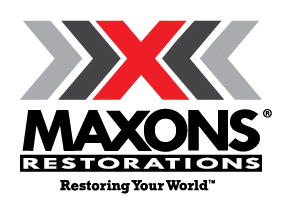MAXONS RESTORATIONS
History
As pioneers of the full-service restoration industry, Maxons Restorations has been restoring commercial and residential property damage for over 75 years, using environmentally friendly methods, in one of the world’s most complex markets: The Greater New York City Area.
Maxons’ long history of customer service and practical knowledge has proven to be essential for both property owners and insurance professionals alike. From high-end homes to businesses and institutions, Maxons’ teams are always ready to rise to the occasion, including repairing building interiors after fire, water, mold, or smoke damage. Such projects included the remediation and restoration of carpets, computers, furniture, and paintings, as well as removing smoke and soot from carpets, glass, porcelain, and marble. With experiences through disasters like 9/11 and Superstorm Sandy, this team was already ready to jump in and help during unprecedented times.
In recognition of its prominent role in disaster recovery, Maxons’ has been frequently featured by the media and named “The Masters of Disaster” and “The Restorers to the Rich and Famous”. Additionally, Maxons’ has been known by and otherwise uses the following names and trademarks: The Problem Solvers, QuickScope, Green Clean Restoration, 321 Rapid Response Guarantee, CPR- Crisis Priority Response, Claim Concierge, Eye of the Storm, and Restoring Your World.
Joining Forces
Maxons established a well-earned reputation for successfully operating in one of the most complex and challenging markets in the world for more than 75 years. Our storied accomplishments, numerous awards and public recognition reflect our deep commitment to the core values of credibility, capability, communication and caring for our clients and colleagues. We strive to see our team grow and advance in their careers and to scale our positive impact in the communities we serve.
By partnering with First Onsite we have unlocked greater opportunities for our team’s development from First Onsite’s strong support and resources while allowing us to expand our impact and better serve our clients within our core market and beyond. When we met the executive teams from First Onsite and First Service we found their strong value-based, people-first culture compelling. They reiterated their commitment to a long-term strategic vision to raise the bar for our industry, make a positive global impact in the face of the growing threat of disaster and leave a legacy we could all be proud of. We continue to realize the exponential benefits and opportunities this partnership has yielded and look forward to achieving many extraordinary accomplishments together in the years ahead.
3-2-1 Rapid Response Guarantee®
Our ‘3-2-1 Rapid Response Guarantee’ symbolizes our commitment to prompt action, ensuring that we are responsive and attentive in emergency situations. Please note that response times may vary based on location and specific circumstances.
CPR Program – Crisis Priority Response®
Our ‘CPR Program – Crisis Priority Response’ reflects our dedication to prioritizing urgent needs in crisis situations. This program ensures that we rapidly address the most critical aspects of a disaster, delivering efficient and effective solutions.
Green Clean Restoration®
Our ‘Green Clean Restoration’ service symbolizes our commitment to environmentally responsible restoration practices. While we strive to use eco-friendly methods and products, the specific approaches employed may vary, aligning with the unique needs of each project.
Project Timeline®
Our ‘Project Timeline’ is a customer-focused information platform that keeps you up to date on every step of your project. This is where you will find crucial information about your job to never feel out of the loop.
